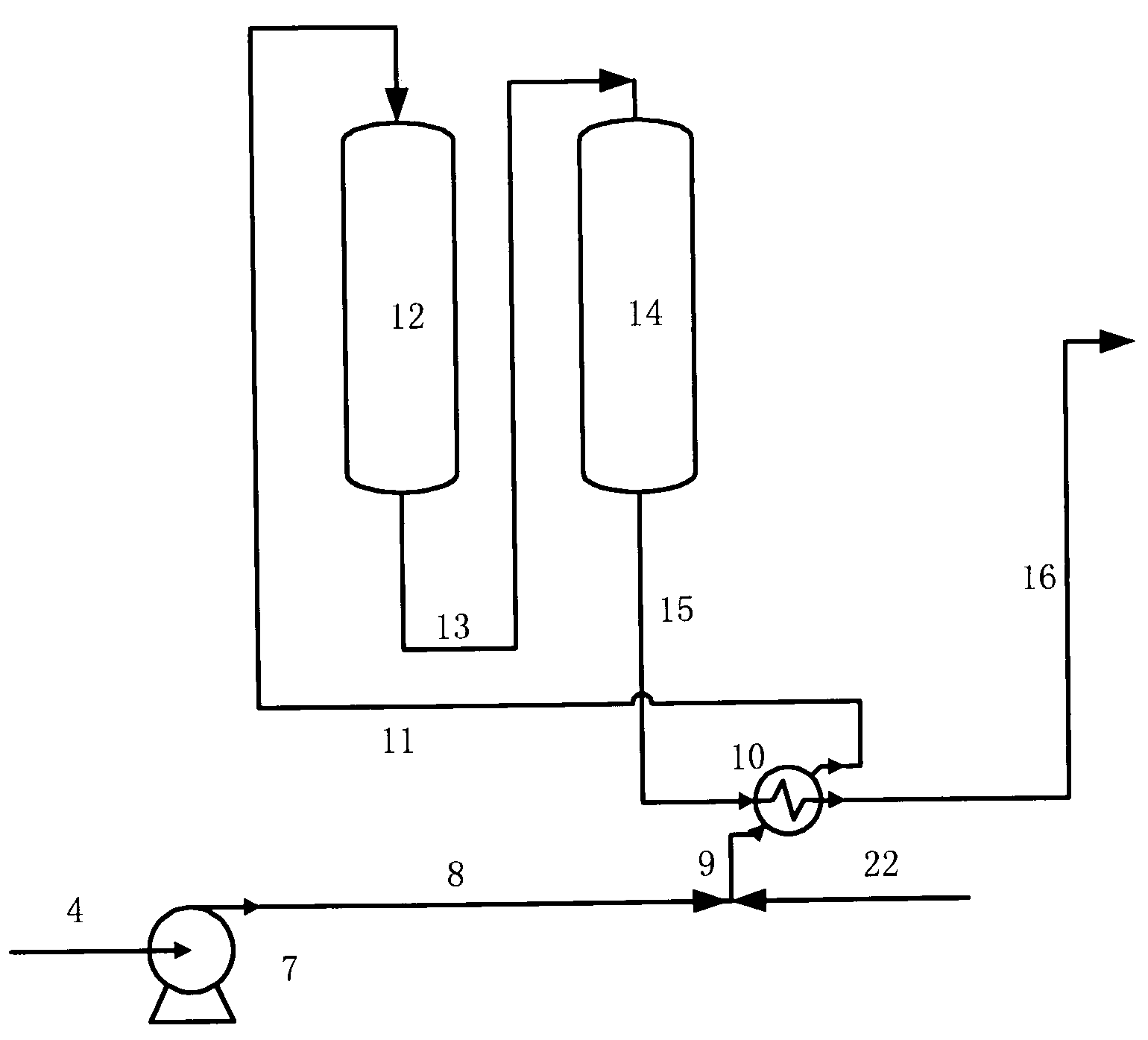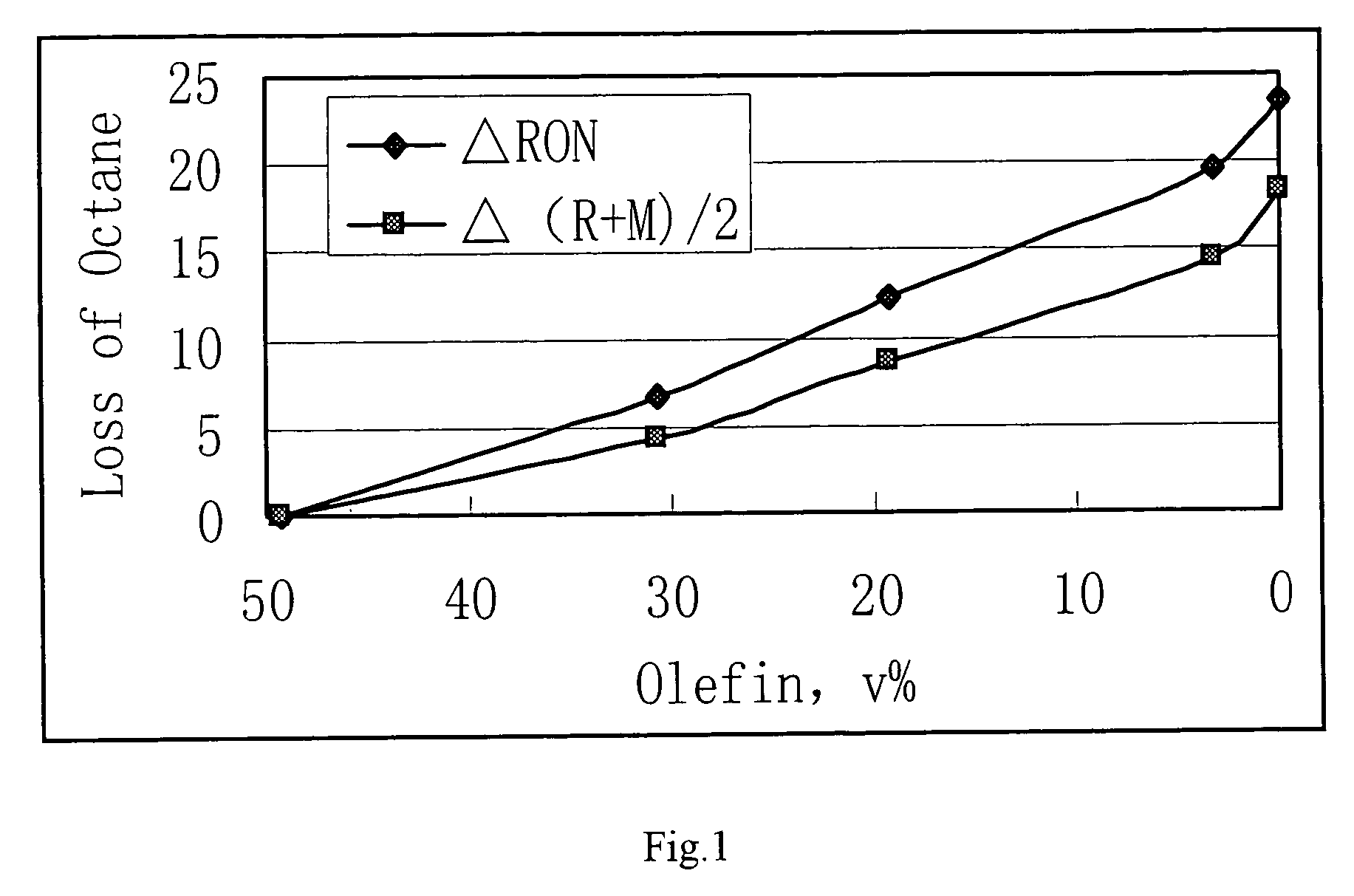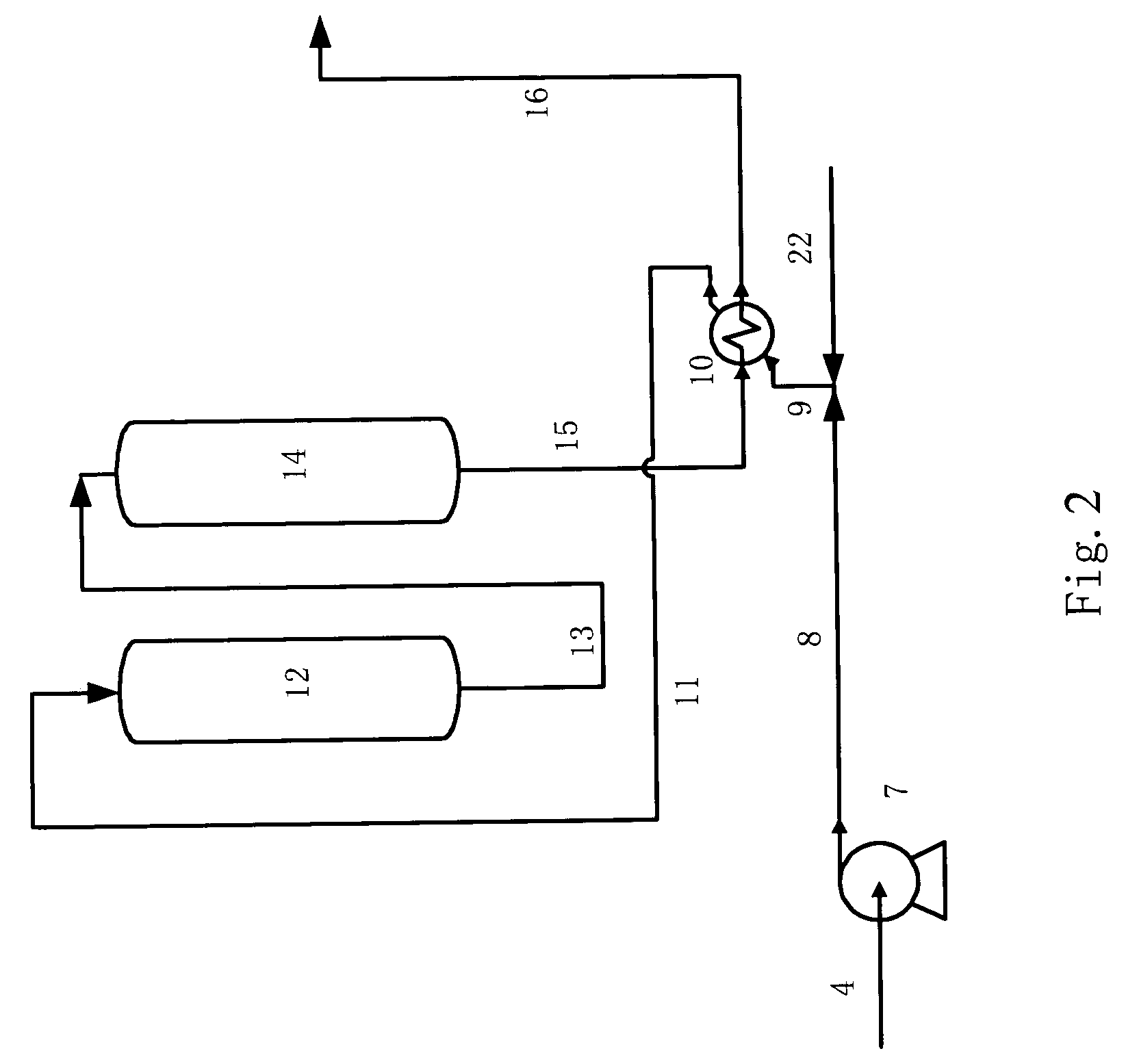Process for reducing sulfur and olefin contents in gasoline
a technology which is applied in the field of hydrocarbon oil refining, can solve the problems of high content of sulfur and olefin, strict limitations on the quality of automobile gasoline, and difficulty in obtaining automobile gasoline with an olefin content less than 20%, so as to reduce olefin content, minimize octane loss, and maximize sulfur removal
- Summary
- Abstract
- Description
- Claims
- Application Information
AI Technical Summary
Benefits of technology
Problems solved by technology
Method used
Image
Examples
example 1
[0054]The comparative example was repeated except that the heavy fraction of gasoline A and hydrogen were successively contacted with a hydroprotecting catalyst, catalyst CH-18, and catalyst RIDOS-1, so as to deeply hydrodesulfurizing, hydrodenitrogenating, saturating olefins and increasing the ratio of i-paraffin to n-paraffin. The heavy fraction of gasoline A, after contacting the hydro-protecting catalyst, had a diene content of less than 0.2 gI / 100 g; after contacting the hydrorefining catalyst, had a nitrogen content of less than 0.5 ppm and an olefin content of 0% by volume. The hydrotreated heavy fraction of gasoline A, obtained from hydro-protecting, hydrorefining and paraffin-modification reactions, was blended with the light fraction, which had been subjected to sweetening, to give a final gasoline product. The reaction conditions and the properties of the hydrotreated heavy fraction and the final gasoline product were summarized in table 4. Table 4 shows that the hydrotre...
example 2
[0055]The feed, FCC gasoline B, was cut at 88° C. to give, based on the feed, 69.8% by weight of a heavy fraction (the remaining was the light fraction). The properties of the whole fractions and the heavy fraction of the feed were summarized in tables 2-3. The heavy fraction and hydrogen were successively contacted with a hydroprotecting catalyst, catalyst CH-18, and catalyst RIDOS-1, so as to effect deep hydrodesulfurization, hydrodenitrogenation, saturation of olefins and increase the ratio of i-paraffin to n-paraffin. The heavy fraction of gasoline B, after contacting the hydro-protecting catalyst, had a diene content of less than 0.2 gI / 100 g; after contacting the hydrorefining catalyst, had a nitrogen content of 0.79 ppm and an olefin content of 0% by volume. The hydrotreated heavy fraction of gasoline B, obtained from hydro-protecting, hydrorefining and paraffin-modification reactions, was blended with the light fraction, which had been subjected to sweetening, to give a fina...
example 3
[0056]The feed, FCC gasoline C, was cut at 95° C. to give, based on the feed, 60.1% by weight of a heavy fraction (the remaining was the light fraction). The properties of the whole fractions and the heavy fraction of the feed were summarized in tables 2-3. The heavy fraction and hydrogen were successively contacted with a hydroprotecting catalyst, catalyst CH-18, and catalyst RIDOS-1, so as to effect deep hydrodesulfurization, hydrodenitrogenation, saturation of olefins and increase the ratio of i-paraffin to n-paraffin. The heavy fraction of gasoline C, after contacting the hydro-protecting catalyst, had a diene content of less than 0.2 gI / 100 g; after contacting the hydrorefining catalyst, had a nitrogen content of 1.2 ppm and an olefin content of 0% by volume. The hydrotreated heavy fraction of gasoline C, obtained from hydro-protecting, hydrorefining and paraffin-modification reactions, was blended with the light fraction, which had been subjected to sweetening, to give a final...
PUM
| Property | Measurement | Unit |
|---|---|---|
| temperature | aaaaa | aaaaa |
| pressure | aaaaa | aaaaa |
| temperature | aaaaa | aaaaa |
Abstract
Description
Claims
Application Information
 Login to View More
Login to View More - R&D
- Intellectual Property
- Life Sciences
- Materials
- Tech Scout
- Unparalleled Data Quality
- Higher Quality Content
- 60% Fewer Hallucinations
Browse by: Latest US Patents, China's latest patents, Technical Efficacy Thesaurus, Application Domain, Technology Topic, Popular Technical Reports.
© 2025 PatSnap. All rights reserved.Legal|Privacy policy|Modern Slavery Act Transparency Statement|Sitemap|About US| Contact US: help@patsnap.com



